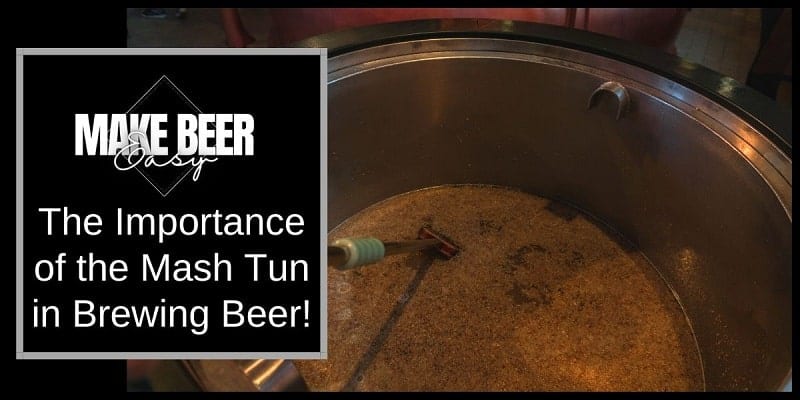As any beer enthusiast will tell you, brewing is a delicate balance of science and art. One essential element of this process is the mash tun, a critical piece of equipment that plays a vital role in producing the wort that is fermented into beer. In this article, we will explore the role of the mash tun in the brewing process and how it works.
What is a Mash Tun?
A mash tun is a vessel used to steep grains in hot water to extract sugars, proteins, and other substances essential for brewing. It is typically made of stainless steel, copper, or other durable materials that can withstand high temperatures and pressure. It is often equipped with a false bottom, a perforated plate that helps separate the liquid wort from the spent grains.
The Mash Tun in the Brewing Process
The mash tun is a crucial part of equipment in the brewing process, serving as the heart of the operation. After the malted grains are crushed, they are added to the mash tun along with hot water. The mashing temperature and pH of the water must be carefully controlled to ensure optimal extraction of the desired compounds.
Wort Separation
Once the mash is complete, the wort has rinsed through a process called sparging and then separated from the spent grains. Sometimes a mash out is performed first. The false bottom of the mash tun helps with this process, preventing the grains from clogging the drain while allowing the liquid wort to flow out. The wort is then transferred to a kettle for boiling, where hops are added for flavor and aroma.
Mash Tun Maintenance
Like any piece of equipment, the mash tun requires regular maintenance to ensure optimal performance. Cleaning after each use is essential to prevent contamination and ensure the quality of the beer. The false bottom should be removed and cleaned thoroughly to avoid any buildup of debris that could clog the drainage system. Additionally, regular inspections of the tun’s heating system, valves, and fittings are necessary to ensure they are functioning correctly.
Mash Tun Variations
There are various types of mash tuns, including: 
– insulated mash tuns,
– direct-fired mash tuns,
– and steam-powered mash tuns.
Each type has its benefits and drawbacks, and choosing the right one depends on the brewer’s specific needs and preferences.
Insulated Mash Tuns:
An insulated mash tun is a container that is designed to maintain a constant temperature throughout the mashing process. It typically has a double-walled construction, with the outer wall made of stainless steel and the inner wall made of insulating material, such as foam.
Benefits:
Maintaining a consistent temperature throughout the mashing process is crucial for producing high-quality beer.
Energy-efficient, as the insulation helps reduce heat loss and maintain the temperature without additional energy.
It provides a stable environment for the enzymes to work efficiently, which results in better conversion of starches to sugars.
Drawbacks:
The insulation can make it challenging to monitor the temperature accurately.
Insulated mash tuns are typically more expensive than other types of mash tuns.
Direct-Fired Mash Tuns:
A direct-fired mash tun is a container that is heated directly by a flame or burner. This type of mash tun is often used in commercial breweries.
Benefits:
Heats up quickly, which can save time in the brewing process.
Allows for precise temperature control.
It can be more cost-effective than insulated mash tuns.
Drawbacks:
It can produce hot spots in the mash, resulting in uneven heating and inconsistent conversion.
Direct contact with the heat source can cause scorching or burning of the mash, resulting in off-flavors.
Steam-Powered Mash Tuns:
A steam-powered mash tun uses steam to heat the mash. It is a popular choice for larger breweries requiring high precision and consistency levels.
Benefits:
It allows for precise temperature control, which is essential for producing consistent beer batches.
Steam heating is gentle and evenly distributed, which can result in better conversion of starches to sugars.
Steam heating can be more energy-efficient than direct heating.
Drawbacks:
Steam-powered mash tuns are typically more expensive than other types of mash tuns.
It may require additional equipment, such as a steam boiler, which can increase the overall cost.
The Role of the Mash Tun in Crafting Different Beer Styles
The mash tun plays an important role in crafting different beer styles. Brewers can alter the mash’s temperature, pH, and timing to achieve specific flavors and aromas. For example, a higher temperature and longer mash time can produce a sweeter, maltier beer, while a lower temperature and shorter mash time can result in a drier, crisper beer.
Last Call
In conclusion, the mash tun is an integral part of brewing beer. It’s where the magic happens, where the grains are steeped to extract the essential compounds that will eventually become beer. With the right equipment and proper maintenance, brewers can achieve their desired flavors and aromas. The mash tun is just one element of the brewing process, but it’s a critical one that cannot be overlooked.
P.S. Don’t forget to grab Bog Robb’s top 5 favorite recipes from his brewpub as a gift. You can find the details on the blog’s sidebar or at the bottom of the page if you’re browsing on your phone.
